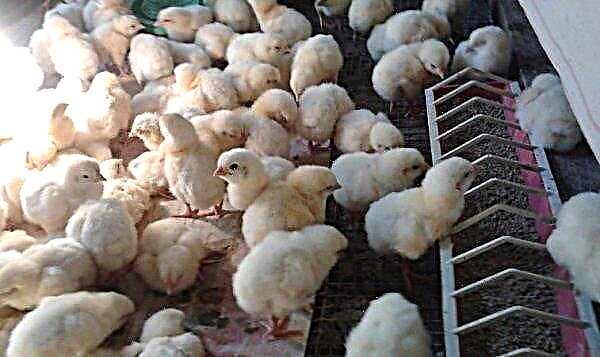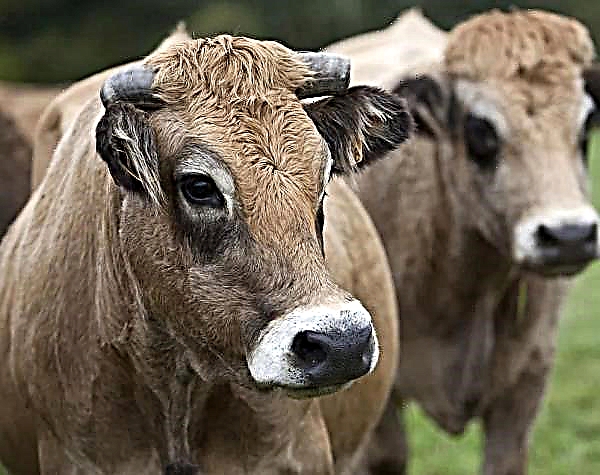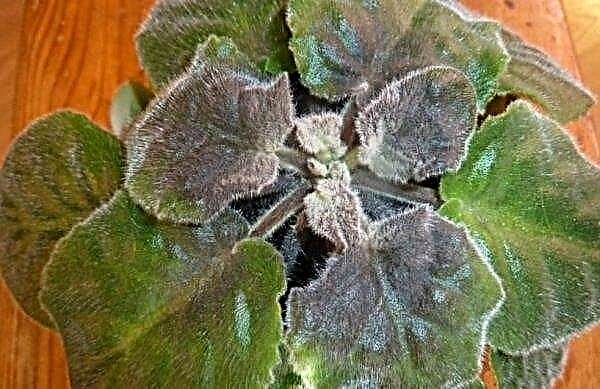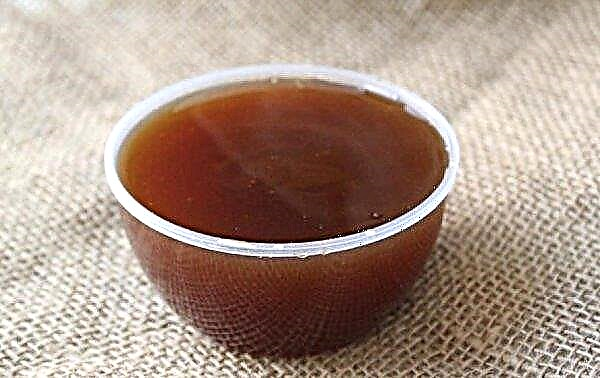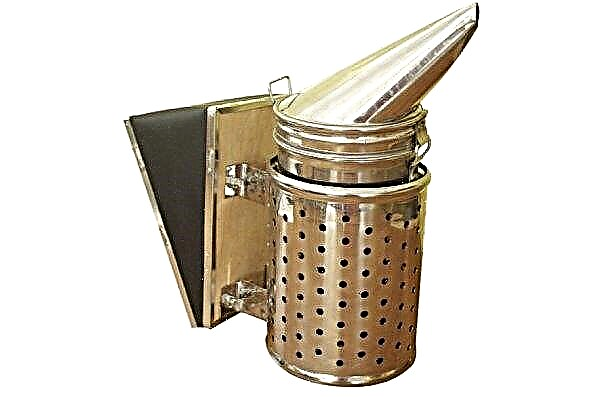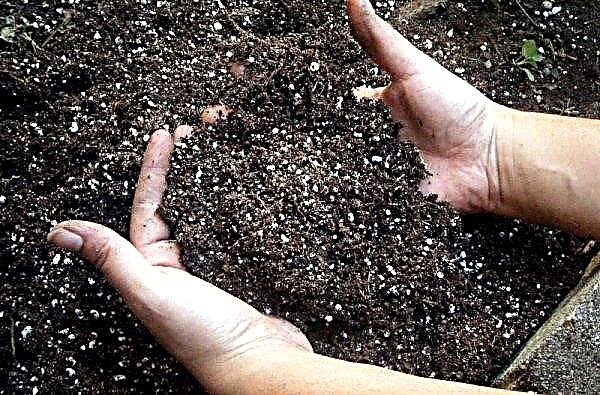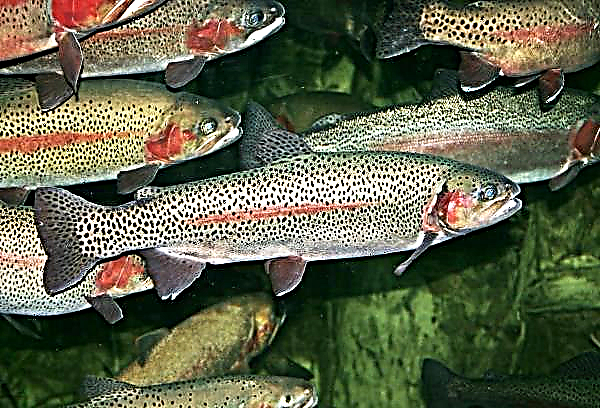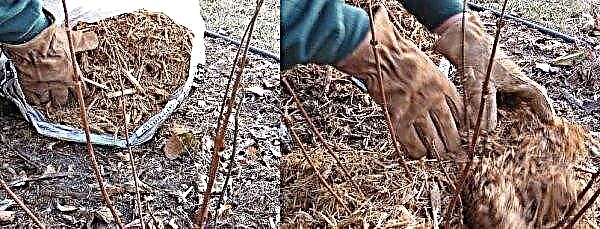The productivity of farm animals is the first question that will concern each owner, and it doesn’t matter whether it is about milk yield or laid chicken eggs. In each of these cases, the reasons will be different, but now we suggest that you familiarize yourself with the features of the content of laying hens and their productivity.
Features egg laying chickens
Representatives of different directions of domestic chickens will lay a different number of eggs, so you should not expect high results from chicken of meat or meat and egg direction. The best indicators in this regard are laid hens, but their productivity may vary depending on the conditions of detention and diet.
Start and masonry period
Their first laying egg is laid at the age of 4.5–6 months, as soon as their body mass reaches 75% of the mass of an adult of the same breed. However, the beginning of the masonry period may be affected by the month of birth and conditions of detention.
So, the chickens that were born in March will be born already in the middle of summer, while representatives of the summer brood can delay this until next year. The fact is that in the first case, the period of livestock growth falls on the warm season, when there is a lot of light and enough green food on the street, which can not be said about the winter season.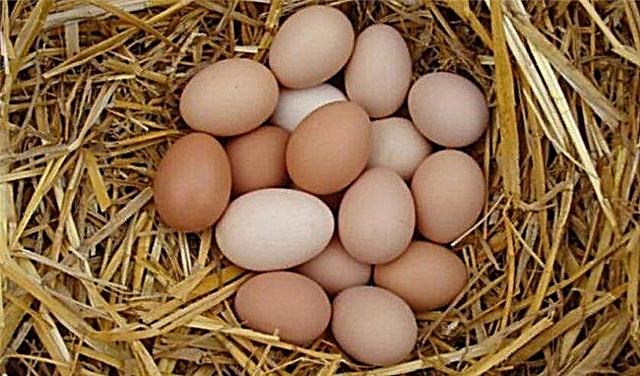 Meat and egg chickens, regardless of the time of birth, will lay their first egg only 6-7 months after hatching, but usually they are bred more in order to obtain meat.
Meat and egg chickens, regardless of the time of birth, will lay their first egg only 6-7 months after hatching, but usually they are bred more in order to obtain meat.
Did you know? The heaviest chicken egg, recorded in the Guinness Book of Records, weighed 454 g, and a chicken of the Leghorn breed laid it back in 1956.
Signs of good productivity
Different representatives of the same breed may differ in their productivity, so many farmers rely on the appearance of laying hens when replenishing chicken herds.
As practice shows, individuals with good performance are often distinguished by the following features of the exterior:
- dense physique with a total light weight;
- well developed and smooth plumage;
- large wings;
- massive scallop;
- a soft big belly (though it shouldn’t make the bird massive).
In addition, the prospects of a laying hen can be estimated by observing for some time its behavior. She should be active, mobile, leave the chicken house early and return to the nest only in the evening.
What egg laying in laying hens depends on
A number of factors affect the number of eggs per day and the total productivity of birds, but most often productivity indicators directly depend on the breed, the conditions of keeping and eating chickens, as well as their age, health status and time of year.
Breed
Traditionally, the hens of the Leghorn, Loman Brown, Isa Brown, Hamburg, Russian White hens are considered to be the best layers. New Hampshire and Rhode Island are slightly behind them, and Brahma and broiler birds give the least amount of eggs.
Their productivity indicators (number of eggs per year) are given in the following table:
| Breed | Group | The number of eggs per year |
| Loman Brown | Egg | 320 |
| Isa Brown | Egg | 300–320 |
| Leggorn | Egg | 270–300 |
| Hamburg | Egg | 200–220 |
| Russian white | Egg | 200–220 |
| New hampshire | Meat and egg | 170–200 |
| Rhode Island | Meat and egg | 180–190 |
| Brahma | Meat | 120–140 |
| Broilers | Meat | 120–140 |
All these data can be considered averaged, and in order to achieve the highest results in egg laying of hens, representatives of any of these breeds will have to provide good conditions for keeping and feeding.
Conditions of detention
When placing hens, it is important to consider two main points: the presence of a warm chicken coop and a spacious walking area, where birds can spend most of the day.
Important! Some owners prefer to keep laying hens in cages, but under such conditions they are unlikely to achieve maximum productivity. The cellular way of keeping is more suitable when growing poultry for meat.
Each building has its own requirements, and if in the case of a walking corral there are few of them (a high net fence, partial shelter from rain or sun and sufficient free space based on the specific number of individuals), then when arranging the house, there are several more features to consider:
- Room dimensions - not less than 0.2 sq. m per 1 chicken with a wall height of not more than 180 cm (this will save the cost of heating the room).
- Temperature indicators - not higher than + 22 ... + 28 ° C.
- Ventilation - a window leaf or a full range hood that provides indoor humidity at a level not exceeding 60–70%.
- Lighting - windows under the ceiling of the building or perimeter lamps located around the perimeter, which can provide young laying hens with daylight for 10-12 hours.
- Placement inside drinking bowls and feeders - they should be accessible and convenient for each inhabitant of the chicken coop, sufficiently filled, but at the same time exclude the possibility of spreading food.
- Litter - straw or sawdust, which in the future can become an excellent fertilizer for the garden (replacement of the bedding is performed at least 1 time per day).
- Perches and Nests - placed on the second "floor" of the building, and for unhindered passage to them are installed small stairs.

Feeding and Vitamins
A properly composed and balanced diet is the first thing that affects the well-being and egg laying of chickens.
In the summer, you don’t have to worry much, because you can add grass and home vegetables growing in the meadows to standard compound feeds and grain, and if laying hens are free to graze on the territory, the task of feeding them is even more simplified.
The only thing worth paying attention to is the constant availability of gravel, sand or ground chalk on the paddle. All this is an excellent source of calcium and other minerals, which means that chickens will not experience problems with plumage and skeletal system.
In winter, the role of premixes in the diet of birds increases significantly. For example, “Ryaba” (1 tbsp.spoon per 10 individuals) or the probiotic “Bioksimin” can be added to the main food. At any time of the year, the nutrition of hens should provide them with a replenishment of protein, fat, carbohydrates, mineral salts, and vitamins.
The approximate rate of feed distribution by season (g / per 1 bird) will look like this:
| Type of feed | Winter | Spring | Summer | Fall |
| Fresh greens | 0 | 20 | 30 | 20 |
| Grass flour | 5 | 3 | 0 | 3 |
| Gravel | 1 | 1 | 1 | 1 |
| Yeast | 3 | 4 | 3 | 3 |
| Cake and meal | 12 | 13 | 12 | 12 |
| Crushed grain | 50 | 55 | 60 | 55 |
| Whole grain | 50 | 45 | 40 | 45 |
| Bone flour | 1 | 1,5 | 1,5 | 1 |
| Carrot | 40 | 20 | 0 | 20 |
| Meat and bone meal | 5 | 7 | 5 | 5 |
| Reverse | 20 | 30 | 30 | 20 |
| Salt | 0,7 | 0,7 | 0,7 | 0,5 |
| Wheat bran | 10 | 10 | 10 | 10 |
| Chalk or shredded shells | 4 | 5 | 4 | 4 |
 It doesn’t matter whether you use feeds from this list or choose others, in any case it is important to distribute them correctly:
It doesn’t matter whether you use feeds from this list or choose others, in any case it is important to distribute them correctly:- in the morning hours (preferably immediately after the birds woke up), the chickens are fed with wet mashrooms made from boiled potatoes, bran, ground grain, kitchen waste and chopped eggshells;
- in the afternoon you can give greens, silage or pulp;
- in the evening (before the birds will roost) they are fed whole grains, distributing its species by day: you can sprinkle wheat in one evening, and on the second day give oats or barley.
Did you know? The egg ripens in the body of the hen within 25 hours, and the development of each subsequent egg occurs only some time after the release of the previous one. As a result, it turns out that one of the days the chicken will not rush.
Season
Layers reach maximum egg production in the warm season, when the air warms up to a temperature of + 25 ... + 28 ° C, and on the street for a long time it is light and a lot of greenery.
To even get a little closer to such conditions in winter, some farmers install fluorescent lamps and heaters in chicken coops, but even this does not always achieve the desired result: hens still feel a decrease in temperature and a reduction in daylight hours.
During this period, the number of eggs per week can decrease to 2–4, while in the summer period the average laying hen gives from 4 to 6 pieces.
The birds have the highest productivity in the first year of their life, and then it falls, and with the advent of cold weather birds give no more than 10 eggs a month. Because of this, some breeds do not contain longer than 1.5 years.
Health and age
Chickens have a wide variety of diseases that may have an infectious or bacterial origin, as well as a consequence of a violation of the vitamin-mineral balance in the body or the active activity of parasites.
The main symptoms of diseases that prevent chickens not only rush, but also live fully, are as follows:
- tousled feathers, diarrhea, a bluish crest (the main signs of a decrease in egg production);
- feather loss and redness of the skin, up to the appearance of wounds (alopecia);
- noisy, frequent and intermittent breathing (occurs with aspergillosis or pullorosis);
- unnaturally bent legs, drooping wings and a head twisted to the side (Newcastle disease, rickets, arthritis);
- violation of the digestive tract (coccidiosis, pullorosis, salmonellosis).
Almost all diseases are also characterized by general weakness, refusal of food and limited motor activity, and in some cases, discharge from the nostrils and beak may be observed.
It is very difficult to diagnose the disease by only a few symptoms, but if a sluggish individual with an unhealthy appearance is noticed in the chicken coop, it is better to temporarily remove it from the rest of the livestock in order to avoid mass infection of the bird.
The older the chicken, the harder it will be to cure it, especially since the signs of a disease are not always clearly visible. However, with age, the productivity of laying hens decreases, and so farmers only try to avoid the massive spread of the disease.
How to increase the egg production of chickens at home
To increase the productivity of layers, it is first of all important to review their diet and make sure that it contains the following components:
- High-quality feed with mineral additives (will help to improve the quality of eggs due to saturation with calcium, phosphorus and iron). As a mineral additive, you can use chalk, shell rock or limestone.
- Foods high in protein to support the entire feathered organism. You can use legumes, milk, cottage cheese, fishmeal, but the latter is only in small quantities, so as not to spoil the taste of eggs.
- Carbohydrate feed in the form of cereals, potatoes, carrots, wheat, millet and corn (a large amount of useful vitamin E is hidden in the sprouted fodder grain).
- Vitamins A, D, E, C, group B, which not only optimize the functioning of organs in the chicken body, but also make it more resistant to infectious and viral ailments. In winter, bird nutrients are taken from hay, silage and multivitamin complexes, and in the summer, all the trace elements they need are available in the form of fresh herbs.
Having chosen the most balanced diet, do not forget about the mode of delivery of feed. Breakfast should be held immediately after waking up, dinner - just before bedtime (before the birds take their places on the perch). In winter, when distributing feed, it is better to turn on the light in the chicken coop.
In addition, it is equally important to maintain suitable conditions for laying hens. First of all, pay attention to:
First of all, pay attention to:
- lack of drafts;
- the location of the nests - each of them is placed separately;
- the temperature in the chicken coop is within +25 ° C;
- the size of the room - it should not be excessively spacious, since chickens love compactness;
- the surface of the floor - it should be warm enough so that the legs do not freeze in the birds;
- additional warming of the house in winter - it is better to hang the doors with warm material, and fill the windows with oilcloth;
- maintaining cleanliness in the room and regular cleaning of feeders and drinkers;
- daylight hours - at least 10–12 hours (in winter, additional artificial lighting should be included);
- the amount of feed given - increased nutrition will lead to obesity of birds, therefore, it will definitely not be possible to increase productivity indicators in this way.
Some farmers use special preparations to increase the egg production of birds, the most popular among which are Ryabushka, ground feed sulfur Ratsion, Premiks, Felucen, and Ground Shell. You can purchase feed additives in a veterinary pharmacy, and as regards their effectiveness, much depends on the correct calculation of the dosage (most often 1 g per individual) and the composition of the main menu.
You can purchase feed additives in a veterinary pharmacy, and as regards their effectiveness, much depends on the correct calculation of the dosage (most often 1 g per individual) and the composition of the main menu.
If you immediately take into account all the nuances of keeping and eating chickens, then most likely you will not have to think about how to increase their egg production, because in favorable conditions it will remain at a high level.
All that is required from the owner of the chicken coop is attentiveness and responsibility towards their wards, and they will fully thank him with delicious eggs.


